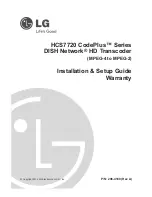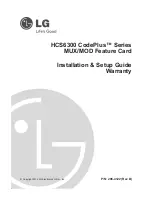
NV
SA Industriepark West 40, B-9100 Sint-Niklaas — Tel. +32 3 760 14 70 — Fax +32 3 777 71 20 — E-mail: [email protected] — www.niko.be — www.niko.nl — www.niko.fr
PM225-099R05494
05-315
Congratulations on your purchase of Niko’s Easywave transmitter.
1. LEGAL WARNINGS
- Read the complete manual before attempting installation and activating the system.
- The installation has to be carried out by a qualified person and in compliance with the statutory regulations.
- This user manual has to be handed over to the user. It has to be included in the electrical installation file and has to
be passed on to any new owners. Additional copies are available on the Niko website or via the support service.
- During installation, the following has to be taken into account (not limited to list below):
- The statutory laws, standards and regulations;
- The state of the art technique at the moment of installation;
- This user manual, which must be read within the scope of each specific installation, only states general regula-
tions;
- The rules of proper workmanship
- In case of questions, you can consult Niko’s support service or contact a registered control organisation.
Support Belgium:
Support Slovakia:
+32 3 760 14 82
+421 263 825 155
website : http://www.niko.be
e-mail: [email protected]
e-mail: [email protected]
In case of a defect, you can return your product to a registered Niko wholesaler, together with a clear description
of your complaint (Conditions of use, stated defect…).
2. DESCRIPTION
This Easywave transmitter is part of the Niko RF (Radio Frequency) system, an installation technique that does not
require any wiring between the control points (push buttons) and the consumers to be operated. This technique
is known as ‘remote control’ or ‘wireless control’. Transmission occurs by means of radio waves at the 868.3MHz
frequency. This frequency is reserved for products that do not transmit continuously (1% per hour = 36s.), so that
there is only a minimal risk of interference. The system is therefore ideally suitable for use in specific applications
such as renovation of interiors, extensions in existing electrical installations where drilling or channeling work is
excluded, offices with movable walls… or to avoid the use of complex cabling configurations. It is a modular system
built around transmitters and receivers. The wall mounted transmitters take the form of an ordinary switch that can be
wall mounted. The hand held transmitters take the form of a conventional remote control unit. Each transmitter can
control an unlimited number of receivers simultaneously. Each receiver can be controlled by up to 32 transmitters.
These products are in conformity with the EG regulations and comply with the essential requirements of the R&TTE
directive 1999/5/EC. The certificate of conformity can be obtained from the Niko support service.
3. OPERATION AND USE
3.1. Range between Easywave transmitters and receivers
Equipment using a remote control, such as TV, video and audio, does not suffer interference from the Easywave
transmitters. The Easywave transmitters need not be pointed at the receiver. The range in buildings amounts to
approx. 30m. In open fields, ranges of up to 100m are possible. The transmitter range depends on the materials
used in the building.
You can also use diagnosis unit 05-370 to determine the RF signal strength in a given environment. The device
detects all 868,3MHz signals. The reception quality of the transmitter signal or the strength of the interfering signals
present is indicated by 9 LEDs, allowing you to determine whether the RF transmitter’s range is sufficient.
brick, concrete
wood, plaster walls
reinforced concrete
enclosure in metall
loss: 20 to 40%
loss: 5 to 20%
loss: 40 to 90%
loss: 90 to 100%
3.2. Inserting/replacing batteries
- Avoid direct contact with the battery to prevent it from discharging.
- Check that no NiCd batteries are used.
- Insert the new battery. Observe the polarity (‘+’ and ‘-‘ symbols in the compartment).
- Use a 3V CR2032 (05-315) battery.
- Used batteries are to be returned to an authorised waste collection point.
3.3. Mounting instructions and recommendations
NEVER install the transmitters:
- in a metal distribution box, housing or netting;
- in the immediate vicinity of large metal objects;
- on or near the floor.
Never cut the white wire, this is the antenna.
4. PROGRAMMING
How to program your Easywave RF system is described in detail in the user manual of the Easywave receivers.
5. TROUBLESHOOTING
If, after programming, the system does not work, you can perform a number of extra checks.
5.1. New installation
- Check whether the battery and the contacts make good permanent contact.
- Check the supply voltage of the receiver in the distribution box.
- Check if everything is connected as shown on the wiring diagrams (see user manual receivers).
- Reset and (re)program the receiver (see user manual receivers; programming).
5.2. Existing installation
- Check the batteries of the transmitter(s).
- Check the mains voltage (230V~) on the receiver.
- Check the operation of the connected load.
- Check for possible interference caused by changes in the system environment (moving of metal cabinets, walls
or furniture...) Restore the original condition, if possible.
5.3. Transmitter malfunction
Pick up the transmitter and walk towards the receiver.
- The system still works at reduced distance: the transmitter has been placed outside the transmitter range or there
is an interference problem. You can use the diagnosis unit (05-370)
- The system does not work even when holding the transmitter close to the receiver: check the programming (see
user manual receivers; programming) and/or the battery of the transmitter.
5.4. The system automatically switches on and off
- The system automatically switches on: This is only possible if a foreign transmitter was programmed in the
receiver within the receiver range. Reset the receiver and reprogram the relevant addresses (see user manual
receivers; programming).
- The system automatically switches off: This situation can be similar to the situation described above or be the
result of brief current interruptions.
6. TECHNICAL DATA
Easywave transmitter 1 channel, 4 control points (05-315)
- transmitter range: 100m in open air; 30m on average in buildings depending on the materials used
- 1 channel and 4 push buttons or 2 switches
- no wiring between control points and consumers to be operated (RF controlled), only connection between the
receiver (switch) and the light or device to be controlled
- orientation (pointing) of the transmitters is not necessary (transmission of signals through non-metal walls is
possible)
- operating temperature: -5 to 50°C
- dimensions: 30 x 28 x 9mm
7. WIRING DIAGRAMS
7.1. Flush mounting interface for push buttons
This interface converts external N.O. contacts into an RF-telegram. The telegram is sent for as long as the contact
is closed (max 8s.). The interface is provided with 4 inputs for external contacts (e.g. push buttons) and 1 antenna
(wire color: white).
white
brown
green
yellow
grey
pink
select
blue
common
7.2. Flush mounting interface for switch
The flush mounting interface for switch converts the bistable contacts into an RF-telegram. If the contact closes,
the ON-code is sent. If the contact opens, the OFF-code is sent. Between opening and closing the contact, there
must be an idle period of at least 200ms. The interface is provided with 2 inputs for the switch and 1 antenna
(wire color: white). The interface for switch is only suitable for switch functions with a low control frequency (e.g.
door contacts…).
white
brown
green
yellow
grey
pink
select
blue
8. GUARANTEE PROVISIONS
- Period of guarantee: 2 years from date of delivery. The delivery date is the invoice date of purchase of the product
by the consumer. If there is no invoice, the date of production applies.
- The consumer is obliged to inform Niko in writing about the defect, within two months after stating the defect.
- In case of a failure to conform, the consumer has the right to a repair or replacement (decided by Niko) free of
charge.
- Niko cannot be held liable for a defect or damage as a result of an incorrect installation, improper or careless
use or wrong usage or transformation of the goods.
- The compulsory regulations of the national legislation concerning the sales of consumer goods and the protection
of the consumers in the countries where Niko sells, directly or via sister or daughter companies, chain stores,
distributors, agents or permanent sales representatives, take priority over the rules and regulations mentioned
above.






















